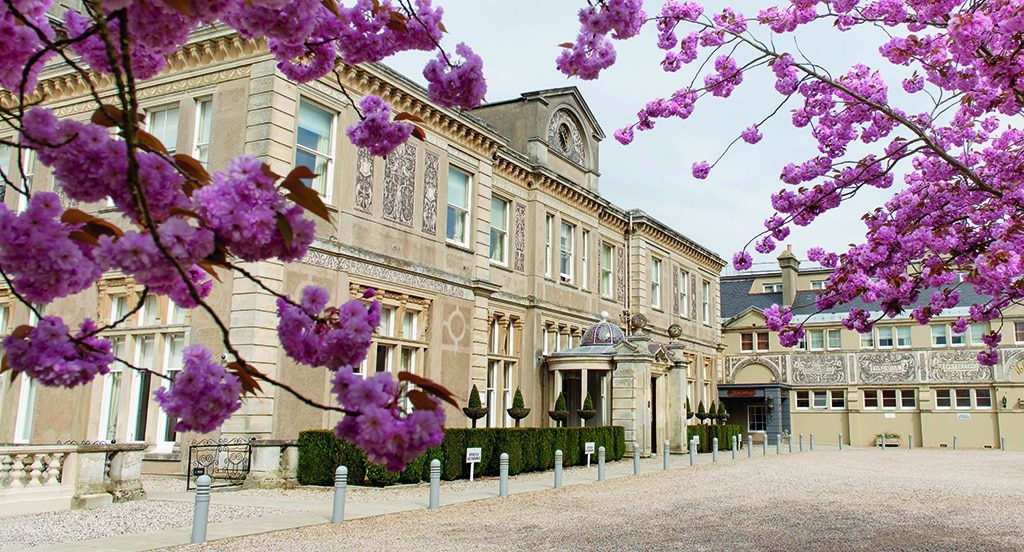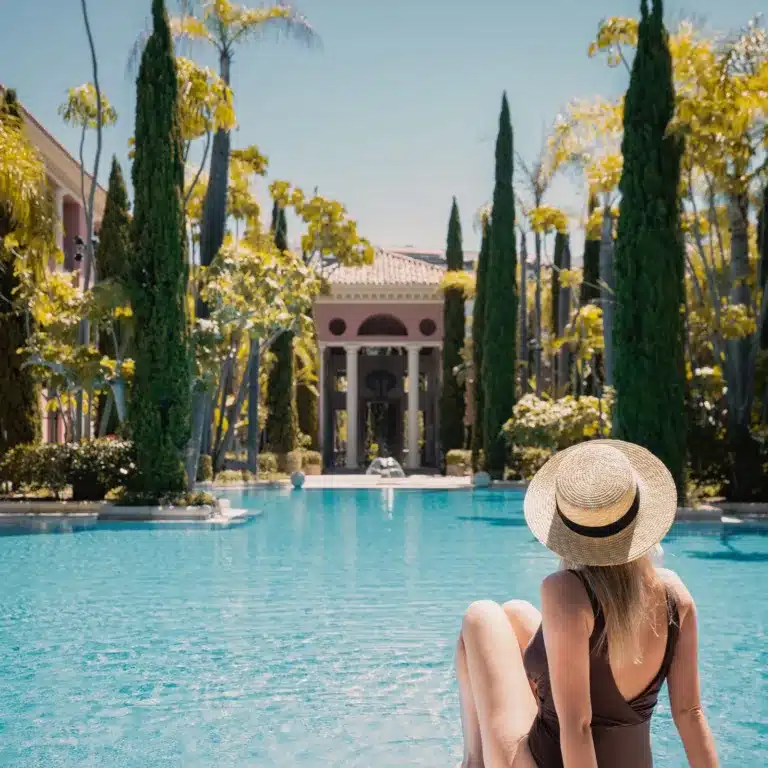Down Hall Hotel & Spa in Hatfield Heath has quite the story behind it, as we discover by delving into the Norman Conquest, Doomsday and classrooms
BY Colin Exton
The manor of Down Hall was in existence during the reign of Edward the Confessor (1042-1066) and we know from Anglo Saxon records that during his reign, it belonged to Ulwin, Thegn of Edmund Ætheling. We also know from these records that Down Hall was one of ten medieval manors in the Parish of Hatfield Broad Oak that were already considered ancient at the time. We can safely surmise that the manor of Down Hall was most likely in existence during the 10th century as well.
At one time a royal estate of Harold II, Hatfield fell into the possession of William the Conqueror after the battle of Hastings in 1066. Immediately following the Norman Conquest, King William claimed all land in England as his absolute title and later gave away very large tracts to his leading nobles. He gave the manor of Hatfield Regis to Aubrey De Vere, and along with 14 more manors and lordships, included the manor of Down Hall. In c1135, Aubrey de Vere’s son, the 1st Earl of Oxford, built a Benedictine monastery next to the small parish church in Hatfield.
There is little mention of Down Hall after Domesday, but we do find it in chronicles of the late 13th century. Downhall bridge, which spans Pincey brook on the road from Hatfield Heath to Matching, was a well-known landmark by 1274. The brook then, as it does now, forms the Northern boundary of the Down Hall Estate and the road to Matching, then, and as it does now, forms part of the Eastern boundary. Robert Taper is the first person named as having been in possession of the manor of Down Hall in the early 1300s. On 12 May 1323, Taper granted lands and rent in Hatfield to the prior and convent and included the manor of Down Hall.
On June 8th 1540, during Dissolution of the Monasteries, the William Glascock buys the manor of Down Hall for £630 8s 6d. It passes down the Glascock male line until 1615 when Elizabeth Glascock is born and who is now sole heir to Down Hall and the family estates. By 1630, she is married to John Ballett. They had two children; Richard, who was born at Down Hall c1635 and John II, born at Down Hall c1640. Elizabeth died at Down Hall in 1649 and Richard succeeded his father John on his death in 1673. Sometime toward the end of the 17th century, Richard has passed away, and without issue, the estate has passed to John, the second son. On 9th June 1720, John sells Down Hall to Mathew Prior for £2,800.
Mathew Prior was not only a prominent British poet, but also a member of Great Britain’s diplomatic service. With the financial assistance of Lord Edward Harley, son of the 1st Earl of Oxford, he buys Down Hall which the poet was to enjoy during the remainder of his life and Harley after his decease. Prior commissioned James Gibbs to design a new house and Charles Bridgeman to replan the gardens. Planting to Bridgeman’s designs was in progress before the end of 1720, but the building of the Palladian villa Gibbs had designed had not been started by the time of Prior’s death in 1721. He died of tuberculosis whilst staying with Edward Harley at Wimpole Hall.

Edward Harley, 2nd Earl of Oxford and Earl Mortimer, was a dedicated collector and patron of the arts. In 1713 he married Henrietta Cavendish-Holles, daughter of the Duke of Newcastle, and the wealthiest heiress in Britain. His collections were extensive and extravagant as he passionately sourced the rarest and most beautiful things. In his obsessive collecting, Harley bankrupted himself, having spent much of his wife’s fortune of some £500,000, and in 1741, was forced to sell Wimpole Hall, Down Hall and all his collections, to pay his debts.
Down Hall is bought by William Selwin, a successful skinner merchant in the City of London who was born in 1685. He paid nearly £3,000 for Down Hall in 1741. William died in 1768 and Down Hall descended to his eldest surviving son Charles Selwin Esq.
Charles took down the Tudor dwelling and rebuilt it in a classical style that was completed in 1777 though some original Tudor fireplace mantels were retained, and which can still be found at the hotel today. Charles Selwin died at Down Hall in 1794 and was succeeded by his brother Thomas as heir.
Thomas was the last of the male Selwin line and had left instruction in his will that the Down Hall estate was to pass down to the next male heir on condition they took the name of Selwin. On Thomas’ death, Down Hall passed firstly to his sister Jane, and then to her only child, another daughter named Jane, who married Sir James Ibbetson, 2nd Baronet. Down Hall then passed down through the Ibbetson male line with each subsequent heir taking the name of Selwin by Royal license. In 1869, Henry John Selwin acceded to the Ibbetson title as 7th Baronet and resumed by Royal licence the original family surname of Ibbetson in addition to that of Selwin. Sir Henry John Selwin-Ibbetson became a Conservative MP until his retirement from the House of Commons in 1892 where he was then raised to the peerage as Baron Rookwood of Rookwood Hall and Down Hall.
Lord Rookwood derived his title from Rookwood Hall that Charles Selwin had bought in 1817 and subsumed into the large Selwin estates. These and the Ibbetson estates were all administered from Down Hall. In 1871, he commissioned Frederick Pepys Cockerell to replace the existing mansion with a sumptuous new one that was completed in 1873. Lord Rookwood was childless at the time of his death in January 1901 whereupon the Peerage and Baronetcy became extinct.
Down Hall was inherited by his nephew Captain Horace Walter Calverley. At the start of World War 1, Down Hall opens as a Red Cross Auxiliary hospital under the supervision of Mrs Louisa Calverley. The Hospital was fitted out and received 9 English and 4 Belgian soldiers as its first batch of wounded on 21 November 1914 and continued to receive wounded soldiers throughout the war. In February 1919, the Hospital closed, and Down Hall returned to a family home. Horace died on September 22, 1929 at the age of 67.

Down Hall re-enters the annals of history in 1932 as Downham school, an upmarket boarding school for girls. Downham was described as a ‘horsey and fashionable girls’ school in Essex’, where learning was frowned on and snobbery was all. Some notable ladies that attended Downham include Pamela Harriman – appointed US Ambassador to France in 1993 by Bill Clinton; Anne Clarissa Eden, Countess of Avon – married to Anthony Eden who was Prime Minister of the UK from 1955 to 1957 and Frances Shand Kydd – mother of Diana, Princess of Wales and grandmother of the Princes William and Harry.
Downham is sold in the late 1960s and becomes in 1967, a conference centre run by a Mr G Liddell. Whether he himself was the owner and whether the business was under the name Downham, or Down Hall, is completely unknown at this stage. What we do know is, that in 1973, St Ouen Antiques had bought the property and announced an opening in early 1974 at ‘Down Hall’ with a display of English and Continental period furniture and fine art.
Down Hall is sold again and bought by Veladail Hotels, owners of the estate to this day. Over the ensuing years, they have invested millions of pounds in restoring the house to its former glory as well as sympathetically modernising and updating the property to create the contemporary, country mansion you see today.







